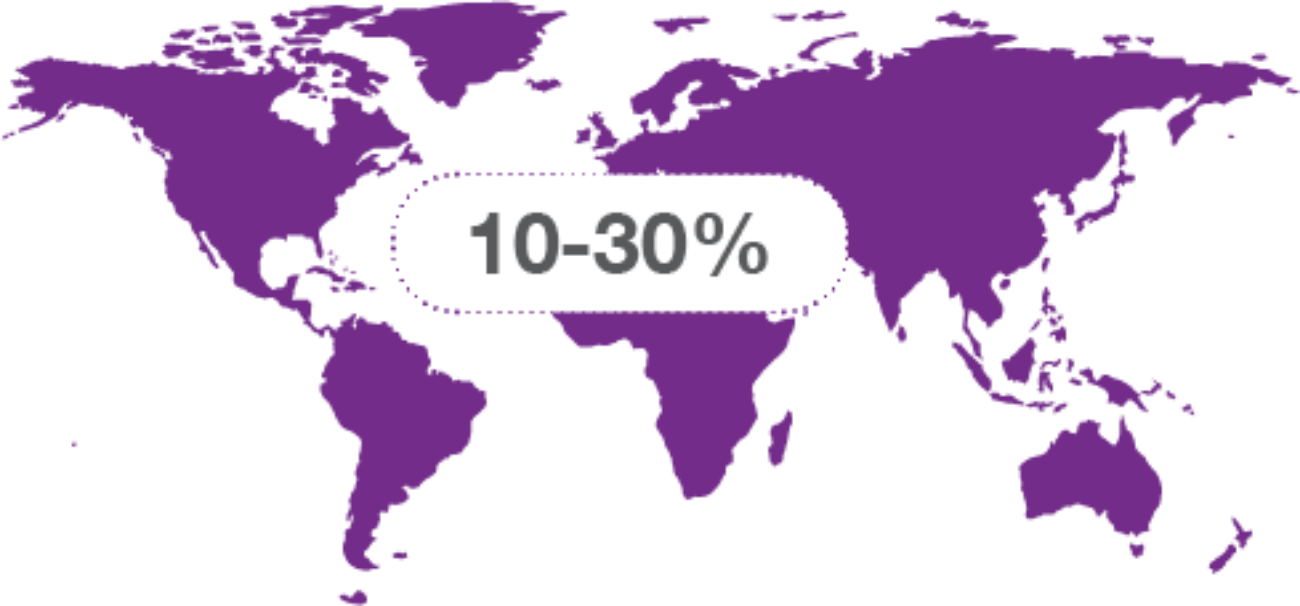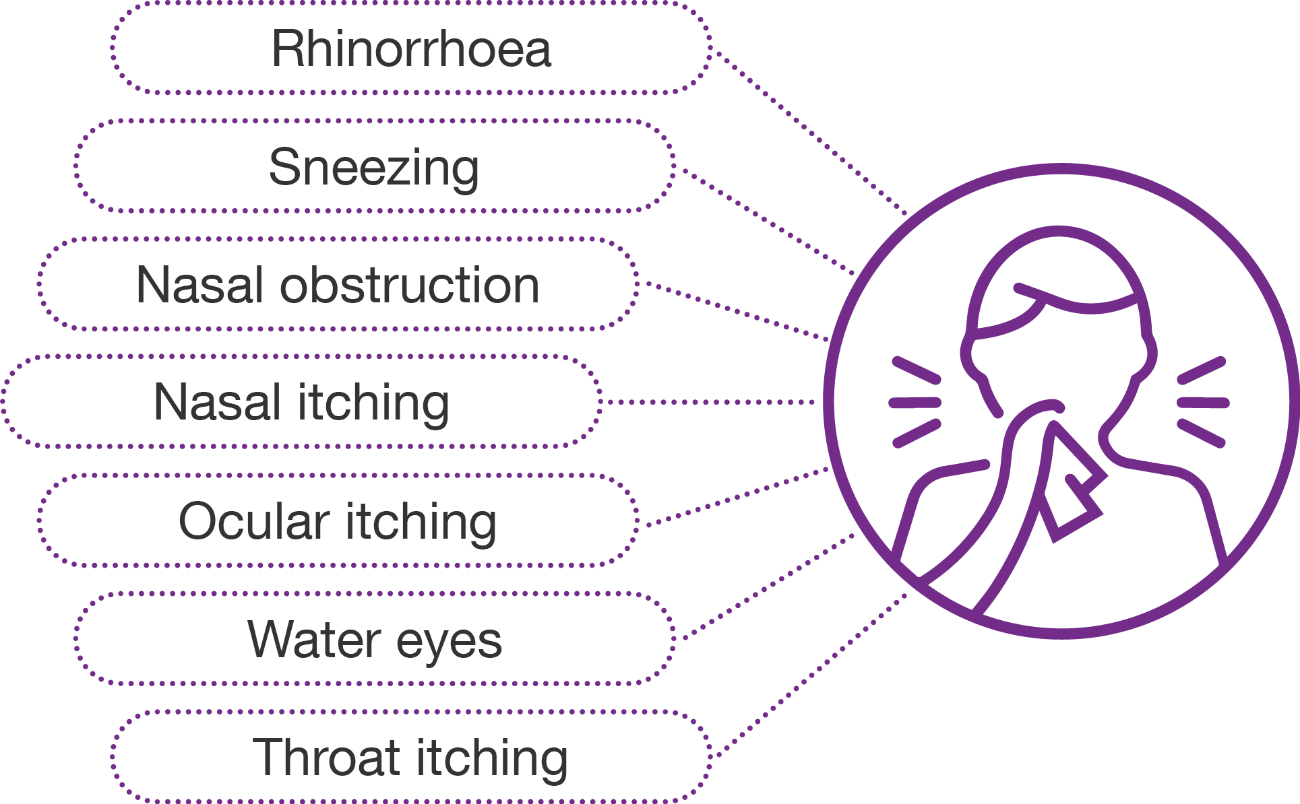How does Air Pollution aggravate Allergic Rhinitis?
Aeroallergens and air pollutants lead to allergy sensitization.
Antibody-mediated hypersensitivity


Oxidative stress-mediated hypersensitivity

Representation of one theory of oxidative stress-mediated hypersensitivity
Repeated exposure, like during pollen season, leads to increased tissue inflammation which may last for days.
Most common Allergic Rhinitis symptoms

Sneezing

Itching

Blocked/runny nose
Management of Allergic Rhinitis in the setting of air pollution

IgE, immunoglobulin
Naclerio et al. 2020. World Allergy Organization Journal (2020) 13:100106.
Management of Allergic Rhinitis Aggravated by Air Pollution
Pollution is the introduction of harmful substances, or pollutants, into the environment that leads to the deterioration of the quality of air, water, and land.

Air pollutants
A mixture of solid particles, liquid droplets and gases. Air pollutants can be natural, such as bush fires, or created by human activity, such as motor vehicles.
Allergens
Biological air pollutants derive from living organisms. Some allergens are more significant indoors, while others are more important outdoors.
Particulate matter

Ultra-fine
(<1 μm)

Fine
(<1–2.5 μm)

Coarse
(2.5–10 μm)
Diesel Exhaust Particles (DEP)

Ozone

House dust mites

Pet dander

Pollen

Outdoor air pollution constituted more than 3% of
the annual Disability-Adjusted Life Year in 2010.
Recommendations for patients
Avoidance
Remain indoors during high pollen levels.

Elimination
Eliminate sources of indoor mold spores, clean thoroughly.

Treatment
Recommend 2nd generation antihistamines or intranasal corticosteroids, anticholinergics, and nasal lavage


Naclerio R, Ansotegui IJ, Bousquet J et al. World Allergy Organ J. 2020 Mar; 13(3): 100106. Published online 2020 Apr 3. doi: 10.1016/j.waojou.2020.100106
How to create a healthy environment

Naclerio R, Ansotegui IJ, Bousquet J et al. World Allergy Organ J. 2020 Mar; 13(3):100106. Published online 2020 Apr 3. doi: 10.1016/j.waojou.2020.100106
Effect of fexofenadine hydrochloride on allergic rhinitis aggravated by air pollutants
Worldwide prevalence of
allergic rhinitis (AR)

Main allergic rhinitis
symptoms

Diesel exhaust particles (DEP) aggravates allergen-induced allergic response
✓ AR is a type I hypersensitivity reaction to airbone allergens, such as pollen (e.g. ragweed)
✓ Exposure to air pollutants and climate change has been linked to AR symptom exacerbation
✓ DEP, an air pollutant, when combined with airbone allergen is able to enhance allergen-induced degranulation, leading to worsening AR symptoms

This was a phase III, single-centre, sequential, parallel-group, double-blind, randomized studya conducted in an environmental exposure unit
Inclusion criteria:
- 2-year history of seasonal allergic rhinitis (SAR) with positive skin prick test to ragweed
- Self-reported history of SAR symptoms aggravated by pollen or air pollutants exposure
- Total nasal symptom score ≥3 in Period 1 (Visit 2)

aNCT03664882, conducted in Kingston Health Sciences Centre, KGH Site, ON, Canada. Posology: fexofenadine HCl 180 mg or placebo once daily. Baseline: for Period 1 defined as hour 0; for Period 3 defined as hour-2. V, visit.
- Ellis AK, Murrieta-Aguttes M, Furey S, et al. Effect of fexofenadine hydrochloride on allergic rhinitis aggravated by air pollutants. ERJ Open Res 2021; 7: 00806-2020. Full article available at: https://bit.ly/3oauMFu. This study was funded by Sanofi. MAT-GLB-2100889
Effect of fexofenadine hydrochloride on allergic rhinitis aggravated by air pollutants
Primary endpoints
Participants graded their Total nasal symptom score (TNSS) on a 0–3-point scale over 12-hours from baseline for each Period.
TNSS was calculated as the sum of rhinorrhoea, sneezing, and nasal itching scores.

First primary objective: to demonstrate the aggravation of the SAR symptoms caused by DEP exposure
Period 2 vs Period 1
Change in TNSS area under the curve (AUC) from baseline to hour 12 TNSS AUC0—12)

Second primary objective: to evaluate the efficacy of fexofenadine HCl in alleviating symptoms aggravated by DEP presence
Period 3
Change in TNSS AUC from hour 2 to 12 TNSS AUC(2—12)
TNSS AUC0−12 in Period 1 and 2
A significant increase in SAR symptoms from Period 1 to Period 2 was observed
Figure 3. Mean (SE) TNSS AUC0-12 in Periods 1 and 2 (EP)

TNSS AUC2−12 in Period 3
A significant decrease in DEP-aggravated, SAR symptoms was observed with fexofenadine HCl compared with placebo
Figure 4. Mean (SE) TNSS AUC2-12 in Period 3 (mITT population)


The proportion of subjects reporting a treatment-emergent adverse events was higher in the placebo group
 |
15.1% |

|
12.6%
|

✓ DEP a common constituent of air pollution,
significantly aggravates pollen-induced SAR symptoms
✓ Fexofenadine HCl 180 mg significantly relieves and climate change these pollution-aggravated,pollen-induced SAR symptoms vs placebo
✓ A survey of clinical trials revealed fexofenadine HCl as the
only therapy that has been shown to alleviate
DEP-aggravated SAR symptoms in an environmental
exposure unit vs placebo
- Ellis AK, Murrieta-Aguttes M, Furey S, et al. Effect of fexofenadine hydrochloride on allergic rhinitis aggravated by air pollutants. ERJ Open Res 2021; 7: 00806-2020. Full article available at: https://bit.ly/3oauMFu. This study was funded by Sanofi. MAT-GLB-2100889
Reference: Telfast® 180 mg film-coated tablets Patient Information leaflet ; Revision Date November 2020
Sanofi Consumer Health Care 87 Yarraman Place; Virginia QLD 4014, Australia.
Disclaimer:*Fexofenadine HCl 180 mg is registered in both markets of UAE and KSA please refer to the respective Patient Information leaflet.
Consumer HealthCare Details:
Opella Healthcare International SAS
First Floor , Office 101, Building 25, Dubai Healthcare City, Dubai, United Arab Emirates
For further medical information, please contact the following: For UAE: 800 OPELLAAE (800 67355223) Direct Line (+971522163940)
For all Gulf Countries: CHCMedical-Information.ME@sanofi.com
To report adverse events, please call +971522164011 or contact Opella Country Safety Head at CHCPVME@sanofi.com
For UAE only you may also contact MOHAP PV department at: PV@mohap.gov.ae
To report any Product Technical Complaint please contact CHC.me.quality@sanofi.com
MAT-AE-2300044 /V1/Feb 2023